If you have been baking or cooking for a while, you know what role every utensil plays in the process of creating a fine dish. Therefore, before buying every kitchen appliance, you need to put a lot of thought into weighing every area. But deciding between the same types of utensils can be quite hard.
Hence we gathered all information into one place and compared KitchenAid classic vs. artisan vs. professional stand mixers. So after you are done reading this article, you will no longer be confused about which one to buy!
KitchenAid Classic vs. Artisan vs. Professional
Below we have discussed the different qualities people usually consider while buying mixers. We have included the differences and similarities of classic, artisan, and professional stand mixers, so you get to decide based on what you want. Let’s have a look:
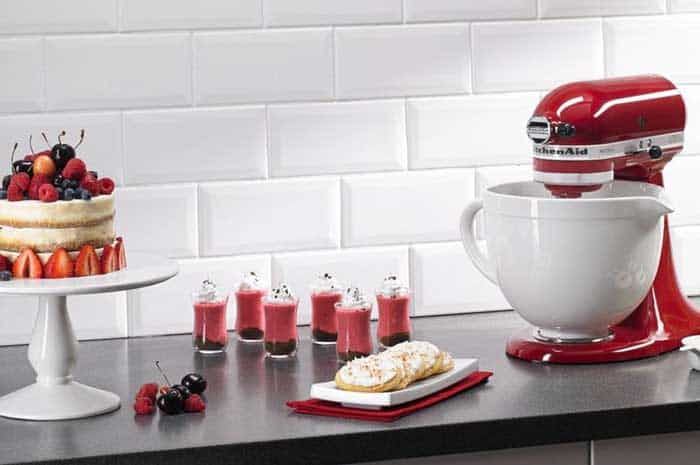
Cheap or Expensive?
Let’s start with the price battle since the budget is very important while buying tools. The cheapest one among the three is obviously the classic mixer costing around $349.99.
But the difference is quite slim between artisan and classic—the artisan mixer costs around $429.99, which is less than $100 difference. The professional mixer is a bit more expensive than the other two. You can get it at around $569.99.
Bonus information, keep an eye out for a discount on several online shops. You might get to buy the most expensive one at the cheapest rate!
What about Capacity?
With more money comes more advantages, and capacity is one of them. Here, the capacity actually means the volume each bowl can hold. So, more volume or quartz means you can bake more ingredients at once.
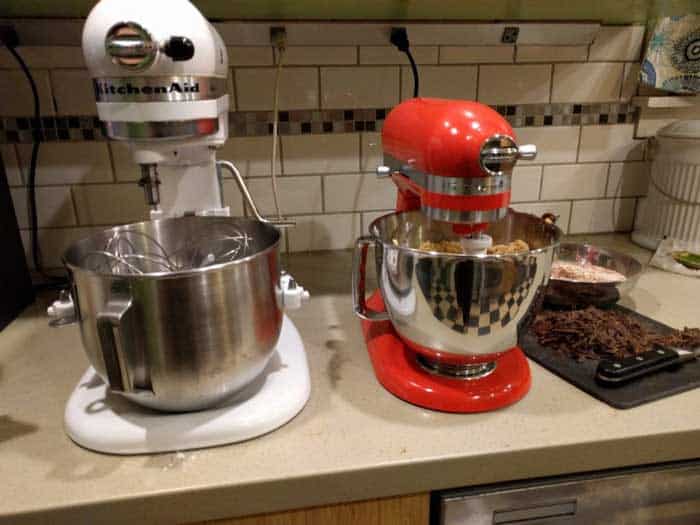
For beginners, it’s recommended to buy the classic one with a 4.5-quart bowl as you can mix a maximum of 2 cake mixes or icing. At the same time, the artisan mixer has a 5-quart bowl, which isn’t a big difference. So in this bowl, you can add some other ingredients.
Then the professional bowl has 6-quart volume. You can easily mix 3-4 cake mixes, and so it’s recommended for professional and regular bakers.
Which One Is Heavier?
When it comes to kitchen utensils, especially mixers, you need to consider the weight since you need to carry it around sometimes. While in a hurry, a lightweight tool can be helpful.
In this comparison part, artisan and classic both have almost the same weight: 25lbs and 26lbs, respectively. On the other hand, the professional mixer is 29 lbs, which makes it 3lbs heavier than the other two.
Does Power Matter?
Yes, it does. The more power a mixer has, the more ingredients it can process at once. The professional mixer, in this area, supersedes the other two by having 575 watts. With this amount of power, you can make loaves of bread every other day.
So this is really for a professional baker who needs the mixer almost daily. On the other hand, the classic has 250 watts of power with which you can make cakes and frosts occasionally. The artisan has 325 watts, which are still nowhere near the professional mixer.
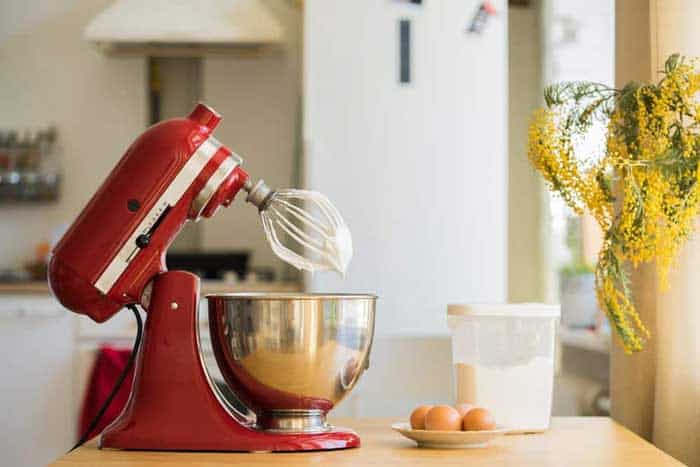
With 325 watts, you can make a loaf of bread every week. So when it comes to power, make sure you buy the one depending on how much you need to use it every month.
What about Colors and Aesthetics?
Are you trying to pick the one that enhances the beauty of your kitchen? Then you will have to be a little picky. Choosing from the classic mixer might be easier as it has only 2 colors available- silver and white.
But artisan and professional mixers are head-to-head competitors here as an artisan has 20 colors available, and the professional has more than 22 colors.
The colors include many rare ones too such as majestic yellow, tangerine, green apple, plumberry, matte velvet blue, toffee delight, espresso, etc. So if you are planning on matching the mixer’s color with your kitchen’s decoration, you are most likely to find a perfect match.
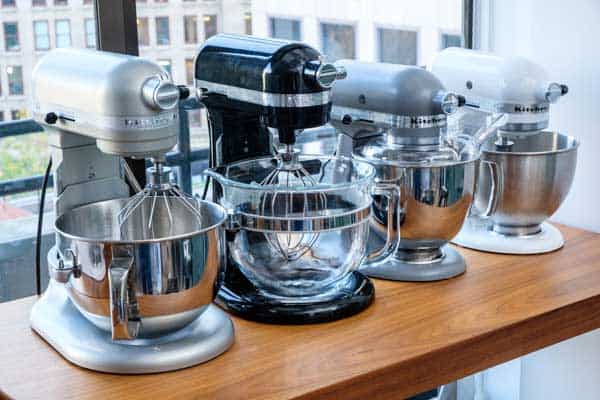
All the mixers are different in shapes. But considering the height, width, and length, the largest one is the artisan mixer. Guess which one is the smallest? The professional, surprisingly! So if you are concerned about space, go with the smallest one here.
So, three of the mixers can add some unique beauty to your kitchen with colors and shapes, just like any other KitchenAid products. They also have some newer versions of the models. Check them out here in the KitchenAid Mixer Buyer Guide.
Which Is Better for Different Ingredients?
It depends on the type of ingredients we are talking about. Let’s think about dough as it is the densest ingredient you’ll need to mix. Since the classic mixer doesn’t hold much power, it is not at all recommended for dense ingredients such as bread.
So if you need to mix dry and dense items also high in volume, it’d be wiser to look at the other two options. The artisan can operate more than the classic but not so frequently. You can use it for bread or other dense items once every other week. So it’s actually for intermittent use.
The professional mixer, however, is the best at handling any type of ingredients. It can work as frequently as you want with stiff, dense, and dry dough along with cake mix, frosty, cream, etc. So in this part, the professional mixer is the winner.
Which Is Faster?
The speed of the mixers depends on two things: the power and the planetary mixing action. And the planetary actions mean the number of touchpoints per rotation. The classic has speed number 10 with 59 planetary actions, which is exactly the same as the artisan mixer.
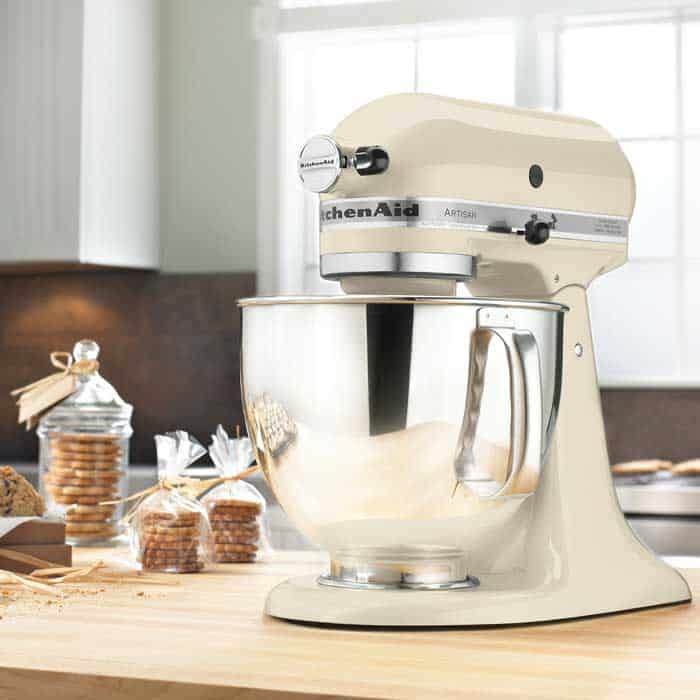
So, both of the mixers are equally fast, covering almost all parts of the bowl. When it comes to a professional mixer, the speed is the same as 10, but the planetary action goes up to 67! That one part sets it apart from the other two. 67 touchpoints in one rotation can cover all parts of the bowl, leaving no room for unmixed ingredients.
Extra Features to Consider
Every model has some unique features to consider, so we’ll mention them here. The artisan and classic mixers have a tilt-head design that offers easy access to the steel bowl to add ingredients easily.
When you lock the machine, it keeps efficient contact between bowl and beater. The professional mixer, however, has something quite impressive. A bowl lift design! This lifts the bowl while mixing, so it doesn’t vibrate and keeps the bowl stable while heavy duty.
Moreover, this mixer comes with a spiral dough hook, flat beater, and stainless steel wire whip. The classic mixer comes with the flat beater, coated dough hook, and 6-wire whip, but the wire whoops isn’t dishwasher-safe.
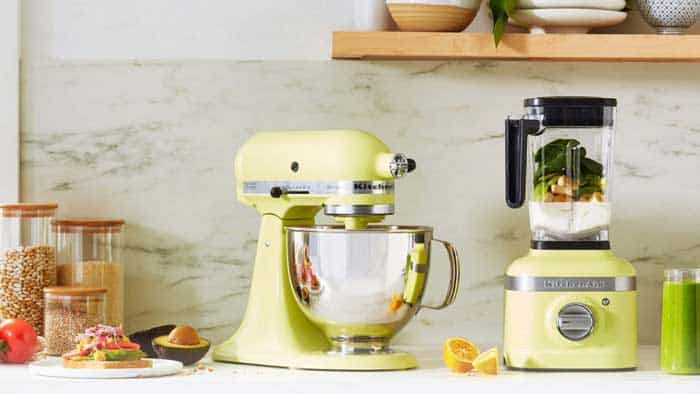
The artisan mixer, on the other hand, comes with a 6-wire whip, coated dough hook, flat beater, and 1-piece pouring shield. Just like the classic mixer, the flat beater and dough hook can be washed in a dishwasher. Another thing to consider would be the handle.
However, the classic mixer doesn’t come with a handle, which can make it harder to grip and move. But the other two do have handles to hold. So it gives the artisan and professional mixer a slight advantage when it comes to handling and managing the mixers. Additionally, all mixers come with at least a one year warranty.
That means the professional mixer has more advantages in terms of some extra-nice features!
Conclusion
That’s everything you need to know about the mixers! If you went through the information we mentioned above in the KitchenAid classic vs. artisan vs. professional guide, you might notice all the basic features are almost the same except some unique ones.
Hence, depending on your budget and preference, the “right” mixer for you could be any one of the three. Why wait for more? Buy the one you like and start flourishing as a baker. Happy baking!

